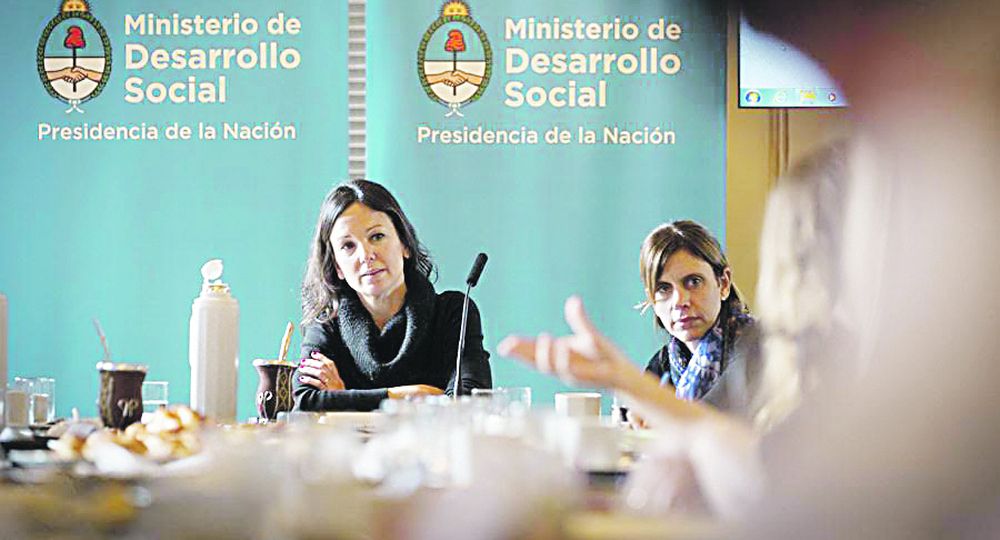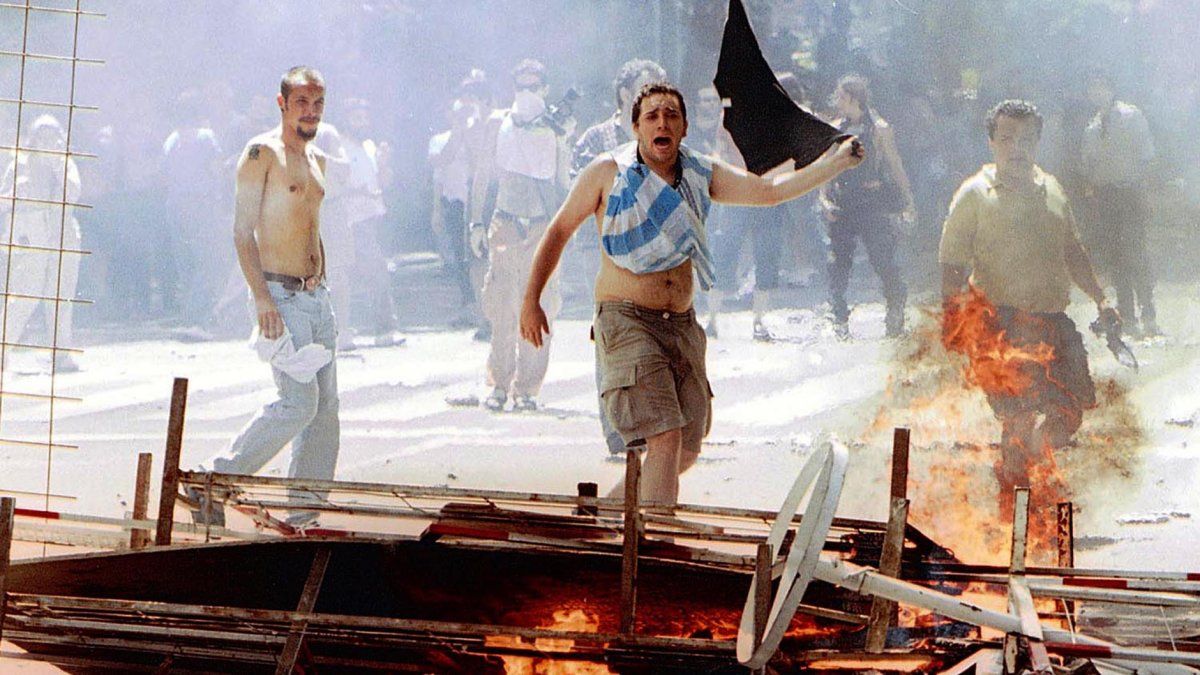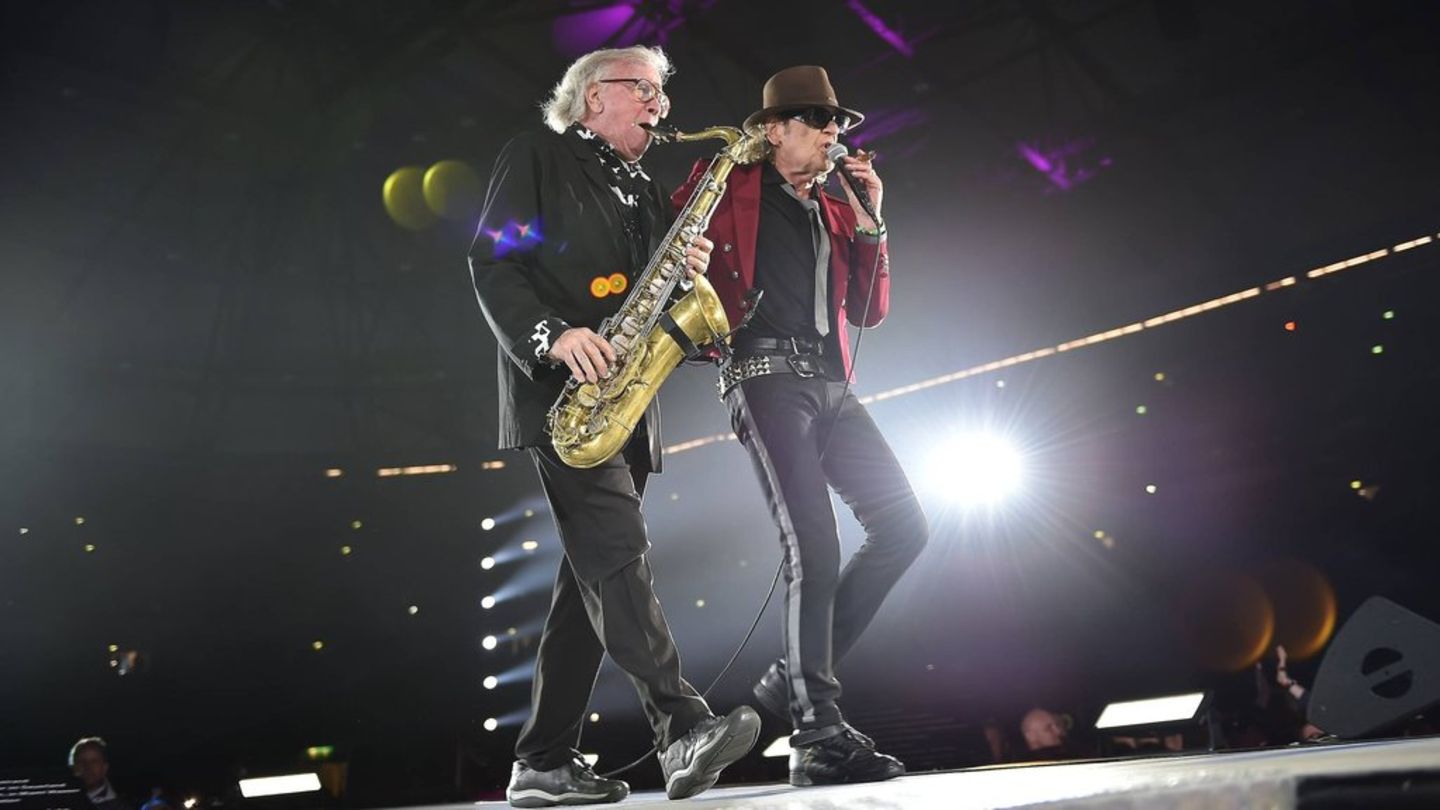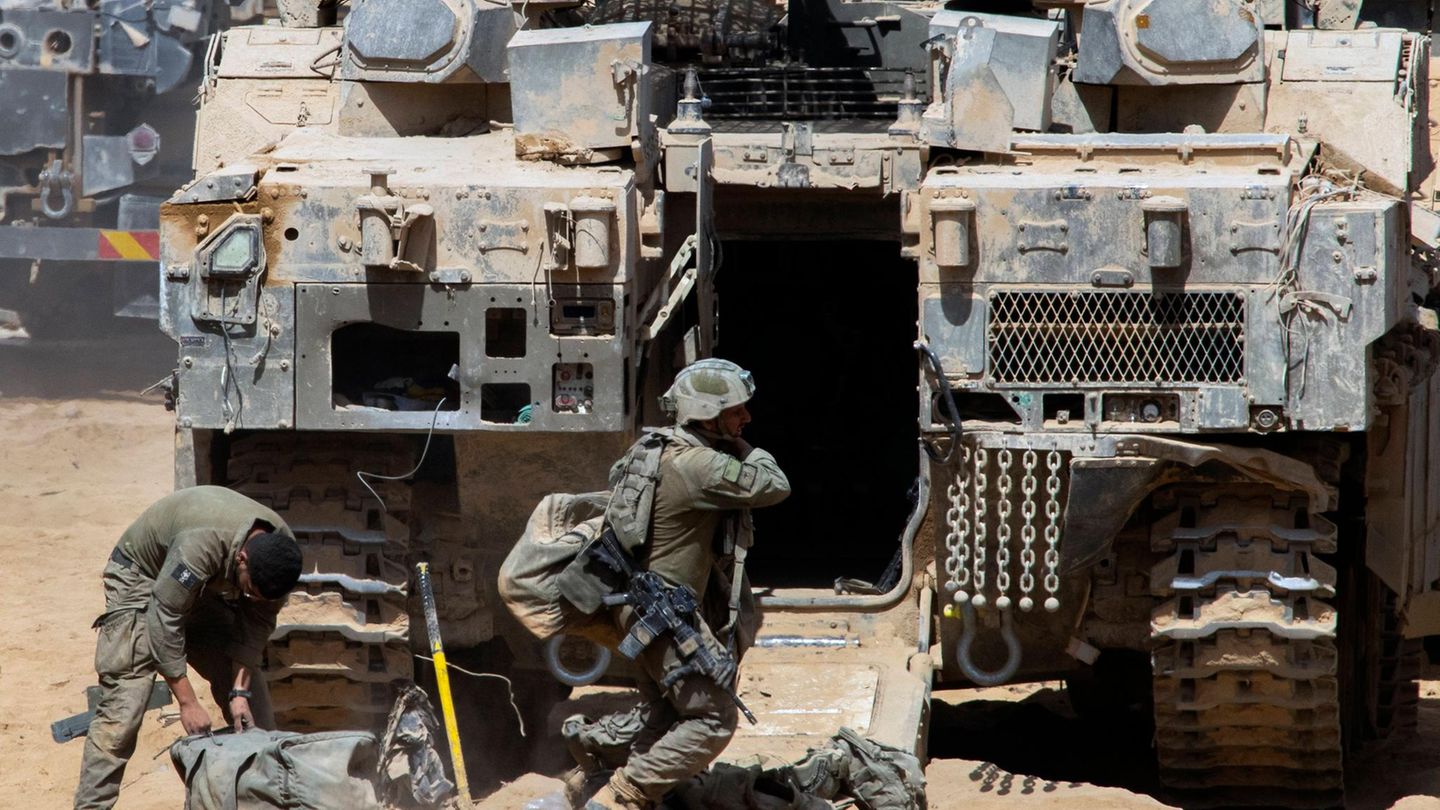I demand social movements (13).jpeg
Ignacio Petunchi
Remembering the line of the outbreaks, in 1989, the looting generated by hyperinflation occurred. They were events of predominantly social origin, with less political and ideological ingredients than the previous ones and which responded to a new social reality that was the existence of an important segment of people who were outside the formal system and who were black workers and underemployed, who in the maelstrom of hyperinflation they were left out of the possibility of consuming food.
Between May 16 and July 9, 1989, there were 676 lootings over a period of 52 days. Alfonsín dictated the state of siege without summoning the Armed Forces and order was only restored when Menem took office, five months before the scheduled date. The looting was repeated with less intensity at the beginning of 1990 (95 were carried out) during the hyperinflation that occurred at the beginning of the Menem government.
In December 2001After more than a decade of Alfonsín, looting once again affected Argentine society with another UCR. The restriction on deposits generated a drastic drop in the income of the 60% of the population that was outside the formal system, at that time unemployment reached 20%, being the historical record, after the country suffered three and a half years of recession. The limitation of the use of cash, accentuated the impotence of the middle classes who wanted to buy dollars to cover themselves against future contingencies, and aggravated the food insufficiency of the marginalized, it was thus that the cacerolazo was launched (Kammerer, Sánchez Roncero).
Between December 13 and 20, 2001, 461 lootings took place, with a phenomenon that exceeded that of 1989 in magnitude, but that, compared, unemployment was more than double and social violence and crime had increased considerably. with which the situation became more delicate. Former President De la Rúa decreed a state of siege. In other words, Macri avoided the state of siege that Alfonsín and De la Rúa could not. To avoid this cost in lives, the pressure of the social movements on Carolina Stanley was successful. Who is interested in the ideological question when a society is about to explode? – Does anyone have any doubts about the thought of the leaders of the social movements in Argentina?
Crisis. Minister Carolina Stanley will lead a new meeting this week with Social Development officials from the provinces.

Crisis. Minister Carolina Stanley will lead a new meeting this week with Social Development officials from the provinces.
The social movements that began to have significance in the 1990s in Argentina were varied (Revilla Blanco), but they began with the so-called “piqueteros” who faced the alienation of YPF (Calderón, Escobar) by the government. of former president Menem. The movements of workers from bankrupt companies, unemployed organizations and neighborhood assemblies, were added, other spaces such as barter groups, who replaced the operations of buying and selling monetary transactions and in some cases, later became cooperatives of worked.
Originally, the vast majority of social organizations were caused by long-term structural unemployment, which averaged double digits, throughout the decade of the 1990s, taking into account that it never fell below 10% in Greater Buenos Aires ( GBA) and various locations in the interior of the country.
Socioeconomic conditions were the main cause of the phenomenon of social movements, which, together with the official opposition, accelerated the process of deterioration of the government of former President De la Rúa, a period in which more than a decade of application of neoliberal policies ended. From that moment on, the social movements constituted a solution axis, to begin to reverse the deterioration of the quality of life of the sectors involved, mired until then in a climate of high frustration. (Garreton). Is that, In reality, the phenomenon of social movements is not only explained by unemployment but also by economic policy errors, led by an attitude of social insensitivity of such magnitude, never seen before.. It can be affirmed that the piquetero movements have been, to a certain extent, the consequence of bad public policies that ended up surpassing their own creators (policy makers).
Product of neoliberal policies in 2001, through point was Argentina, heading towards a revolutionThis is how the idea of making a change would first come up, in order to avoid the bankruptcy of the institutional system. Those responsible for the outgoing government did not apply policies that responded to the demands articulated by the social movements (Gerardo Morales, Patricia Bullrich, Horacio Rodríguez Larreta, María Eugenia Vidal, Ricardo López Murphy, Hernán Lombardi, Nicolas Dujovne, etc.).
Later, it would be with the new authorities in a context of general crisis, that measures were adopted that disarmed the existing economic model, while the declaration of “default”, broke with the private international financial system (not with the multilateral credit organizations), and a gap of hope opened up. It must be said that, to a large extent, the so-called neoliberal mechanisms, since 2002 (Duhalde) ceased to be present, then the Kirchner cycle would generate 5.5 million jobs.
It is clear that what was necessary was done to moderate the free fall of the economy (when in the last quarter of 2001 the quarterly GDP collapsed at an annualized rate of more than 30%), it was necessary to apply an ultra expansive monetary policycomplementing it with an uninhibited fiscal policy until reaching the ceiling of the debt ratio (170 points of GDP), which with Cristina Kirchner fell to only 46% of GDP (N. del R.: product of what came to be called , debt reduction policy, which did not contemplate the nominal increase in debt-which by the way grew, at a slower rate than the GDP-, but the relation or quotient: Debt/GDP).
Financial crises begin long before the peak, in 2000 it was already affecting the “financial system that we were going to export” (Melconián 2001), and also the society emerging from a recession that led to 16 consecutive quarters of GDP declines, and 17% of unemployment, the speeches of the intellectuals who resisted, received little attention, or were directly disqualified, since the “unique thought” still prevailed.
The Political Opportunity Structure
It is the situation that facilitates the appearance of social movements (Tarrow). It is at this conjuncture that theorists describe the “structure of political opportunities.” This means the consistent dimensions of the political environment that encourage or discourage collective action among citizens. They discover potential allies and show how the authorities are vulnerable. These resources appear when situations of change occur that generate opportunities for collective action, among which stand out:
- The possibility of accessing government elites. Phenomenon that can occur when fissures occur in the cohesion of the governmental elites and, with it, a sector of these, seeks, among other resources, the support of certain social movements (Eduardo Duhalde and Nestor Kirchner)
- The availability of influential allies. Phenomenon that occurs when a social movement gets supporters of its cause in the Church, among certain members of the intelligentsia or the world of culture.
Collective action proliferates when people have access to the spaces they need to escape their habitual passivity and find opportunity.
The concept helps us to understand why social movements sometimes acquire a surprising capacity to exert pressure against the authorities.
Regarding the strategies and repertoire of social movements, these can range from violent collective action to the use of conventional actions -such as strikes, letters to the media and demonstrations. Between these two extremes there is a range of indefinite and changing proposals that use “disruption”.
Social movements were the disruption. In this sense, the history of collective action is the history of how new forms of collective action are incorporated into the repertoire as they are learned, experienced, lived and assimilated by movements, opponents and elites alike. Many of the originally disruptive ways become mainstreamas has happened with the strike, which has gone from being a crime to a fundamental right, or the demonstration (Puig, Martí, Salvador).
For all this, and because if the opposition wins they will be on the side of the people, our recognition and reparation arrive; for those who put the body, for those who fell in the fight. For those who paradoxically avoided the Lebaneseization of the country, imagining disruptive initiatives, as true social and popular economy entrepreneurs.
Graduate Professor UBA and Masters in private universities. Master in International Economic Policy, Doctor in Political Science, author of 6 books. @PabloTigani
Source: Ambito
David William is a talented author who has made a name for himself in the world of writing. He is a professional author who writes on a wide range of topics, from general interest to opinion news. David is currently working as a writer at 24 hours worlds where he brings his unique perspective and in-depth research to his articles, making them both informative and engaging.




